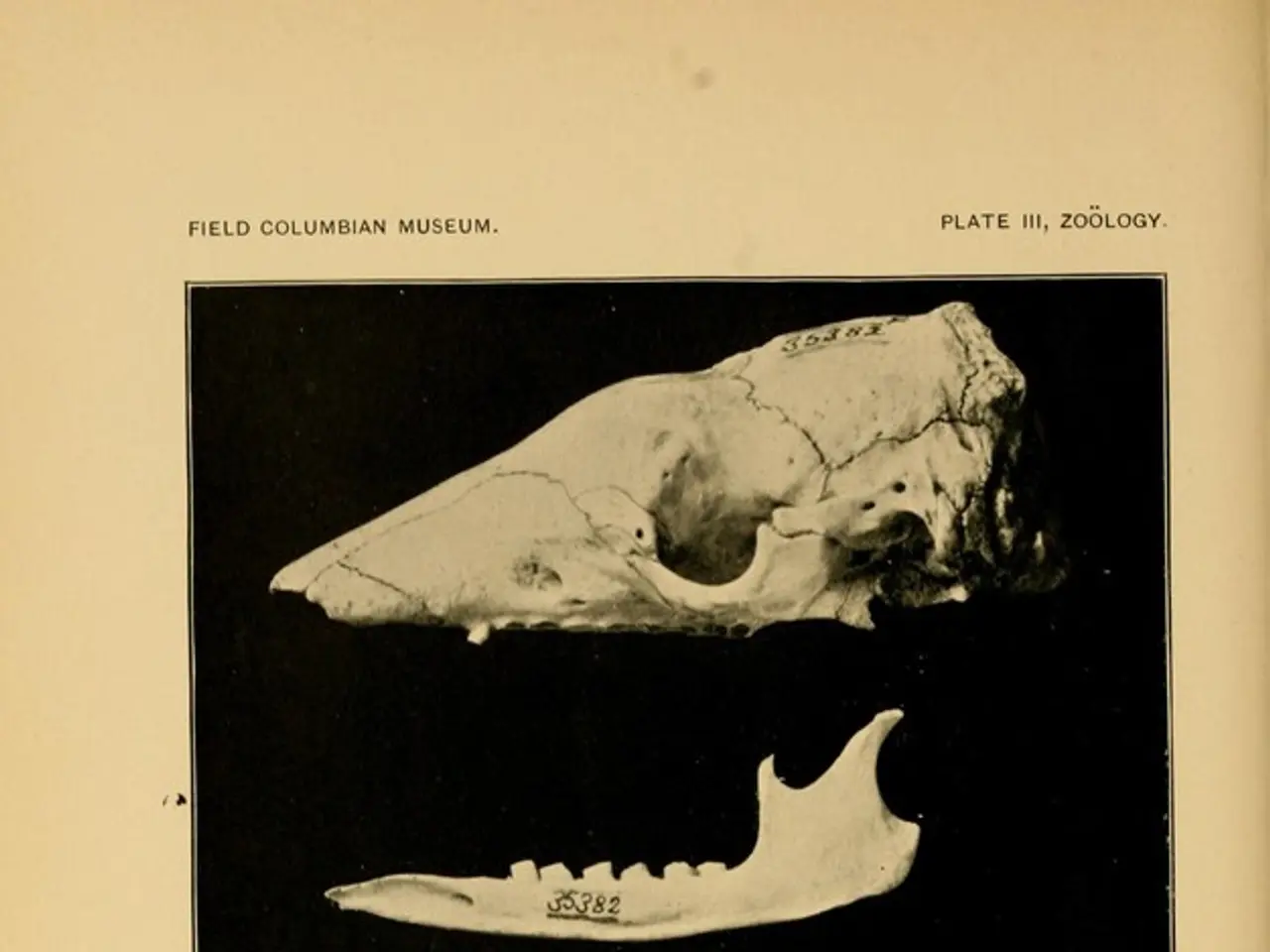The Interlink Between Menopause and Osteoporosis: An Examination
Menopause, a natural stage in a woman's life, marks the end of her reproductive cycle and typically occurs between the ages of 45-55 years [1]. During this phase, hormonal changes, particularly the sharp decline in estrogen levels, directly contribute to the development of osteoporosis [2].
Estrogen is vital for maintaining bone density as it regulates the bone remodeling process. It inhibits osteoclast activity (cells that break down bone) and promotes osteoblast survival (cells that build bone) [2]. However, during menopause, estrogen levels plummet, causing increased osteoclast formation and activity, leading to accelerated bone loss [2].
As a result, women can lose up to 10% of their bone mass in the first five years after menopause [3]. This leads to reduced bone mineral density and compromised bone microarchitecture, making bones fragile and prone to fractures [5]. About 50% of postmenopausal women may develop osteoporosis as a result of these hormonal changes [3].
Other factors such as genetics, lifestyle (e.g., smoking, low physical activity), and medical conditions can further increase the risk once estrogen declines [2]. Not consuming enough calcium and vitamin D, regularly dieting, and not consuming enough protein may also be risk factors for developing osteoporosis [6].
To manage this condition, treatment options include consuming enough calcium and vitamin D, doing regular weight-bearing and resistance exercises, limiting the consumption of alcohol and caffeine, quitting or avoiding smoking, starting hormonal therapies, and taking medications such as Fosamax, Actonel, Zometa, Prolia injection, etc. [7]. The United States Preventive Services Task Force recommends osteoporosis screening for postmenopausal females [7].
It's important to note that osteoporosis is often referred to as "the silent disease" because a person may not experience any symptoms and may not receive a diagnosis until they fracture or break a bone [4]. Symptoms of a fracture in the vertebrae include severe back pain, loss of height, a hunched posture, curvature of the spine, etc. [4].
Maintaining bone health during and after menopause often requires monitoring, lifestyle adjustments, and sometimes medical intervention to reduce fracture risk [1][2]. Resources are available for more research-backed information and in-depth resources on menopause.
References:
[1] North American Menopause Society. (2022). Position statement: The management of menopause. Retrieved from https://www.menopause.org/docs/default-source/position-statements/position-statements-2022/position-statement-the-management-of-menopause.pdf?sfvrsn=944f296a_2
[2] National Institute on Aging. (2021). Osteoporosis and menopause. Retrieved from https://www.nia.nih.gov/health/osteoporosis-menopause
[3] World Health Organization. (2018). Osteoporosis: Assessment of fracture risk and its application to screening for treatment. Retrieved from https://www.who.int/publications/i/item/9789240016554
[4] National Osteoporosis Foundation. (2021). Osteoporosis and fractures. Retrieved from https://www.nof.org/patients/diseasefractures/
[5] National Institute of Arthritis and Musculoskeletal and Skin Diseases. (2021). Osteoporosis. Retrieved from https://www.niams.nih.gov/health-topics/osteoporosis
[6] National Institute of Arthritis and Musculoskeletal and Skin Diseases. (2021). Calcium and vitamin D. Retrieved from https://www.niams.nih.gov/health-topics/calcium-vitamin-d
[7] National Osteoporosis Foundation. (2021). Treatment. Retrieved from https://www.nof.org/patients/treatment/
- The sharp decline in estrogen levels during menopause directly contributes to the development of osteoporosis, a medical condition that affects women's health and compromises bone health and wellness.
- As a result of hormonal changes during menopause, women can lose up to 10% of their bone mass in the first five years, making bones fragile and prone to fractures.
- About 50% of postmenopausal women may develop osteoporosis, a condition often referred to as "the silent disease" as a person may not experience symptoms until they fracture or break a bone.
- To manage osteoporosis, it's important to maintain a healthy diet rich in calcium and vitamin D, engage in regular weight-bearing and resistance exercises, and avoid smoking and excessive alcohol and caffeine consumption.
- Scientific research and resources like the National Institute on Aging, National Osteoporosis Foundation, and World Health Organization provide comprehensive information on osteoporosis, its relationship to menopause, and strategies to maintain bone health in women's health.



